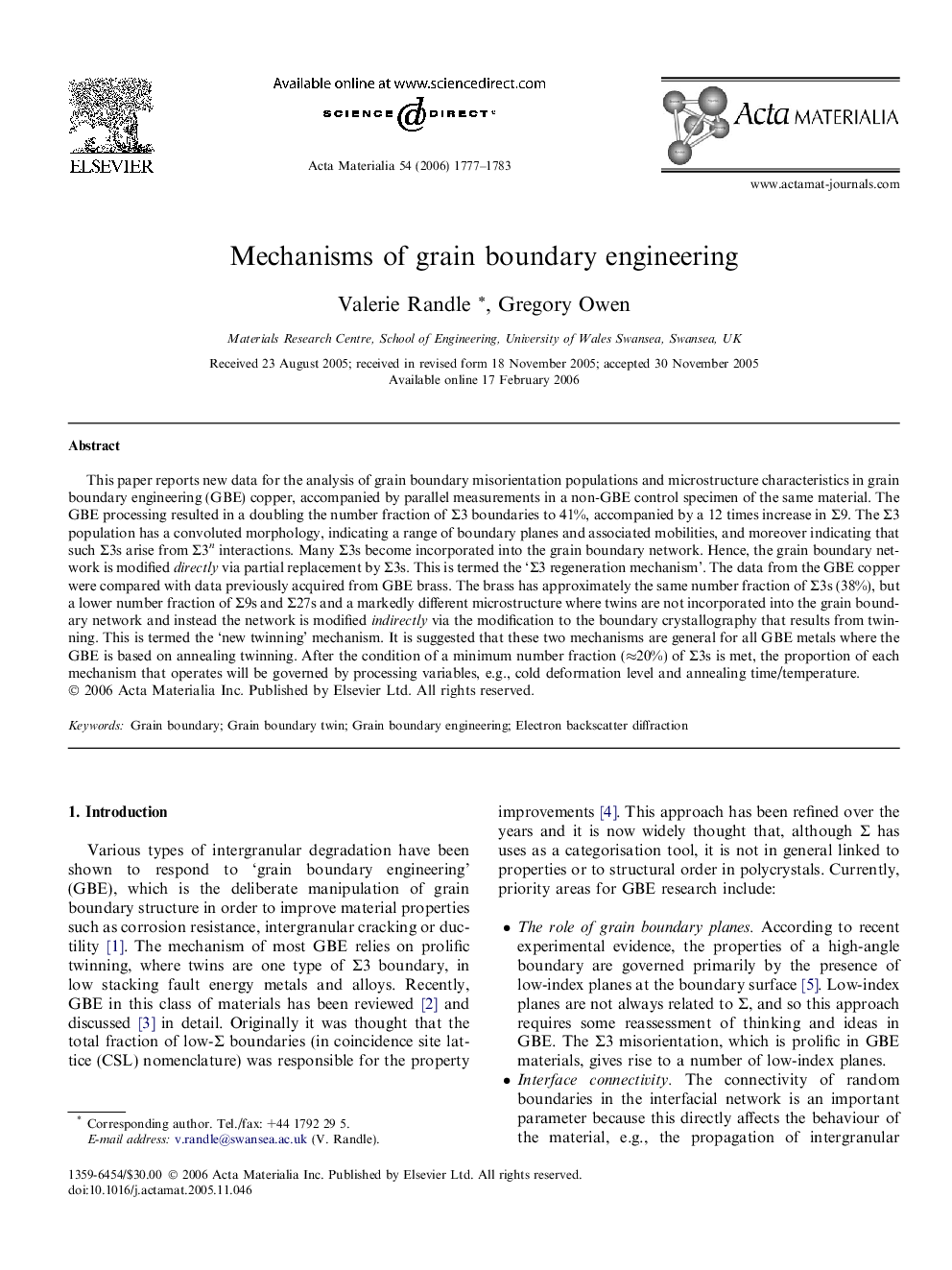| Article ID | Journal | Published Year | Pages | File Type |
|---|---|---|---|---|
| 10620903 | Acta Materialia | 2006 | 7 Pages |
Abstract
This paper reports new data for the analysis of grain boundary misorientation populations and microstructure characteristics in grain boundary engineering (GBE) copper, accompanied by parallel measurements in a non-GBE control specimen of the same material. The GBE processing resulted in a doubling the number fraction of Σ3 boundaries to 41%, accompanied by a 12 times increase in Σ9. The Σ3 population has a convoluted morphology, indicating a range of boundary planes and associated mobilities, and moreover indicating that such Σ3s arise from Σ3n interactions. Many Σ3s become incorporated into the grain boundary network. Hence, the grain boundary network is modified directly via partial replacement by Σ3s. This is termed the 'Σ3 regeneration mechanism'. The data from the GBE copper were compared with data previously acquired from GBE brass. The brass has approximately the same number fraction of Σ3s (38%), but a lower number fraction of Σ9s and Σ27s and a markedly different microstructure where twins are not incorporated into the grain boundary network and instead the network is modified indirectly via the modification to the boundary crystallography that results from twinning. This is termed the 'new twinning' mechanism. It is suggested that these two mechanisms are general for all GBE metals where the GBE is based on annealing twinning. After the condition of a minimum number fraction (â20%) of Σ3s is met, the proportion of each mechanism that operates will be governed by processing variables, e.g., cold deformation level and annealing time/temperature.
Keywords
Related Topics
Physical Sciences and Engineering
Materials Science
Ceramics and Composites
Authors
Valerie Randle, Gregory Owen,
